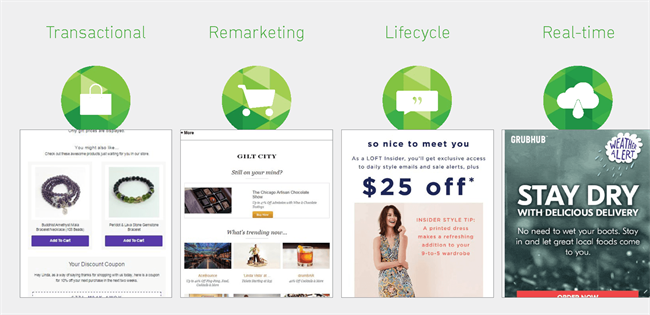Trigger Emails Generate 5x the Click Rate

by Amberly Dressler
16 May, 2017
"How to grow an email list" is a top question across industries, but a large batch of contacts does little if marketers do not use their list to segment by behaviors and demographics.
Still, new subscribers made up six percent of marketers' subscriber base, up eight percent year over year (YoY) and up 30 percent over the last three years according to Yes Lifecycle Marketing data from Q1 2017. The report's authors suggest that the growing number of new subscribers means both willingness to subscribe to and willingness to open marketing emails.
The catch, if there is one, is that in order for the emails to be opened, clicked through and interacted with in a substantial way, they have to be personalized and relevant to the recipient. The Q1 data from Yes Lifecycle Marketing indicates that "triggered" messaging is one of the most effective ways for brands to deliver engaging content, as these emails are "informed by specific consumer actions or data and deployed within a set timeframe."
Examples of triggered emails include transactional (e.g., receipts, recommendations, shipping notifications), remarketing (e.g., shopping cart or browser abandonment), customer lifecycle (new sign-ups, anniversaries) and real-time (e.g., capitalizing on current events like an awards show or the recipient's local weather).

Still, new subscribers made up six percent of marketers' subscriber base, up eight percent year over year (YoY) and up 30 percent over the last three years according to Yes Lifecycle Marketing data from Q1 2017. The report's authors suggest that the growing number of new subscribers means both willingness to subscribe to and willingness to open marketing emails.
The catch, if there is one, is that in order for the emails to be opened, clicked through and interacted with in a substantial way, they have to be personalized and relevant to the recipient. The Q1 data from Yes Lifecycle Marketing indicates that "triggered" messaging is one of the most effective ways for brands to deliver engaging content, as these emails are "informed by specific consumer actions or data and deployed within a set timeframe."
Examples of triggered emails include transactional (e.g., receipts, recommendations, shipping notifications), remarketing (e.g., shopping cart or browser abandonment), customer lifecycle (new sign-ups, anniversaries) and real-time (e.g., capitalizing on current events like an awards show or the recipient's local weather).

Yes Lifecycle Marketing data indicates that "triggers" make up just under seven percent of total campaigns that marketers send, yet they generate almost five times the click rate, almost double the open rate and nearly triple the click-to-open rate. Additionally, the average order value for business-as-usual retail emails is $56.34, compared to $61.54 for triggered messages. The report's authors believe marketers are missing a huge opportunity to drive engagement and conversions by not deploying more triggered campaigns.
Overall, here's how industry benchmarks stack up:

Overall, here's how industry benchmarks stack up:


Amberly Dressler
Head of analyst relations, public relations, customer advocacy (People Heroes), customer community, content marketing (full funnel/lifecycle), content operations and optimization, reputation management and social media. Leads a team of nine superstars to exceed our goals multi-fold.









